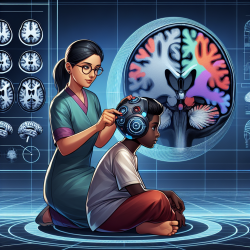Understanding Burnout in Speech Therapy Telepractice
Burnout is a pervasive issue affecting many speech therapists, especially those engaged in telepractice. According to a 2022 survey by the American Speech-Language-Hearing Association (ASHA), nearly 60% of speech-language pathologists (SLPs) reported experiencing symptoms of burnout, such as emotional exhaustion and reduced professional efficacy. This is particularly prevalent in the context of telepractice, where therapists face unique challenges, including technology issues, isolation, and balancing multiple IEPs (Individualized Education Programs).
Data-Driven Approaches to Mitigate Burnout
Addressing burnout requires a strategic, data-driven approach. Research has consistently shown that specific interventions can significantly reduce burnout levels among SLPs. Here are some strategies supported by empirical evidence:
- Workload Management: A study published in the Journal of Speech, Language, and Hearing Research (JSLHR) highlights the importance of workload management. Therapists who use data to streamline their schedules report higher job satisfaction. Implementing software solutions that automate administrative tasks can free up valuable time for therapists.
- Professional Development: Continuous learning and professional growth are crucial. Data from a 2023 ASHA report suggests that SLPs who engage in regular professional development experience lower burnout levels. Online courses and webinars focused on telepractice skills can be particularly beneficial.
- Peer Support Networks: Establishing peer support groups can provide emotional relief and practical advice. Research indicates that SLPs who participate in regular peer meetings report feeling more connected and less isolated.
Leveraging Technology for Better Outcomes
Technology is a double-edged sword in telepractice; it can be both a source of stress and a tool for improvement. When used effectively, technology can enhance therapy outcomes and reduce burnout. Here are some ways technology can be leveraged:
- Telepractice Platforms: Platforms like TinyEYE offer user-friendly interfaces and integrated tools that simplify session management, thereby reducing the cognitive load on therapists.
- Data Analytics: Utilizing data analytics to track student progress and therapy effectiveness can provide therapists with valuable insights, helping them tailor their approaches and achieve better outcomes.
Creating a Sustainable Work Environment
Creating a sustainable work environment is crucial for long-term success in telepractice. Employers can play a significant role by fostering a supportive culture. Data from a 2023 survey indicates that SLPs working in environments with strong organizational support report lower burnout levels. Key aspects include:
- Regular Feedback: Providing regular, constructive feedback can help therapists feel valued and motivated.
- Flexible Scheduling: Offering flexible work hours can help therapists manage their personal and professional lives more effectively.
Conclusion: Inspiring Change
While burnout is a significant challenge, it is not insurmountable. By adopting data-driven strategies and leveraging technology, speech therapists can mitigate burnout and improve their professional efficacy. At TinyEYE, we are committed to supporting SLPs in creating great outcomes for children, ensuring both therapists and students thrive in the telepractice environment.










